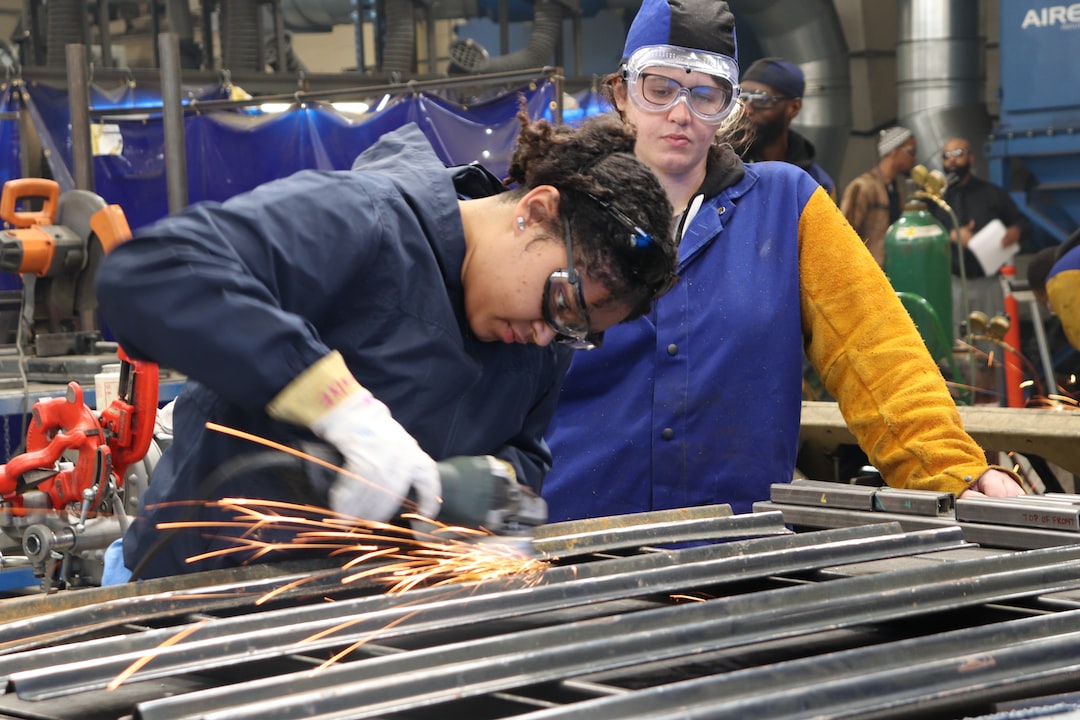The Role of Automation in Modern Manufacturing Processes
In today’s fast-paced and competitive world, manufacturers are constantly searching for ways to improve efficiency, reduce costs, and increase productivity. One key solution that has emerged in recent years is automation. Automation, which involves the use of machines to perform tasks with minimal human intervention, has revolutionized the manufacturing industry and had a profound impact on how products are made.
Automation has long been an integral part of manufacturing processes. However, recent advancements in technology have taken automation to new heights. From robotics and artificial intelligence to machine learning and the Internet of Things, automation has become more intelligent, intuitive, and versatile. As a result, manufacturers can streamline their production processes, eliminate errors, and enhance overall operational efficiency.
One of the most significant advantages of automation in manufacturing is its ability to perform repetitive tasks with precision and consistency. Unlike humans, machines do not get tired, make mistakes due to human error, or require breaks. This allows manufacturers to increase their production rates, reduce costs, and improve quality control. Machines can work 24 hours a day, seven days a week, ensuring higher output and minimizing downtime.
When it comes to intricate assembly procedures, automation can significantly enhance the speed and accuracy of the process. By employing robots or robotic arms, manufacturers can handle complex tasks that would otherwise be time-consuming or risky for human workers. For instance, in the automotive industry, robots are used to assemble car parts, apply coatings, and perform inspections with unparalleled precision. This not only leads to faster production but also ensures that every piece is assembled correctly, reducing the likelihood of defects and recalls.
Moreover, automation has made it possible for manufacturers to optimize their inventory management systems. By integrating automation with real-time data collection and analysis, manufacturers can monitor their supply chains, track inventory levels, and make informed decisions about procurement, production, and distribution. This, in turn, leads to better inventory control, reduced waste, and improved resource allocation. Manufacturers can align their production schedules with market demand, avoiding overproduction or stockouts, ultimately saving time and money.
Automation also contributes to improved workplace safety and reduces the risk of accidents. By automating hazardous tasks or processes that involve exposure to harmful substances, manufacturers can protect their employees from potential harm. For example, in industries where there is a risk of exposure to toxic chemicals or extreme temperatures, such as chemical or metal manufacturing, automation can be used to handle those tasks, eliminating the need for humans to be directly involved. This not only improves safety but also ensures compliance with health and safety regulations.
In addition to increasing efficiency and optimizing operations, automation can also lead to the creation of new jobs. Contrary to popular belief, automation does not necessarily result in massive job losses. While it may replace certain repetitive or dangerous positions, it also creates new roles that require higher skill levels. Automation creates a demand for technicians, engineers, programmers, and other skilled professionals who can design, operate, and maintain these automated systems. As a result, automation can promote skill development and enhance job prospects.
However, embracing automation in manufacturing does pose some challenges. One of the main concerns is the initial cost of implementing automation systems. Purchasing or upgrading equipment, training employees, and integrating new technology can be expensive. Smaller manufacturers may find it difficult to afford the necessary investments, limiting their ability to compete with larger, more automated companies. Additionally, transitioning to automation requires a cultural change within the organization. Employees may be resistant to change, fearful of job displacement, or unsure about operating and maintaining automated systems. Addressing these challenges requires careful planning, effective communication, and employee training programs.
In conclusion, the role of automation in modern manufacturing processes cannot be overstated. From improving efficiency, quality control, and workplace safety to enhancing inventory management and job creation, automation has revolutionized the manufacturing industry. As technology continues to advance, manufacturers must embrace automation to stay competitive, remain agile, and meet the increasing demands of today’s market. While challenges may exist, the benefits of automation far outweigh the costs, positioning manufacturers for long-term success.

